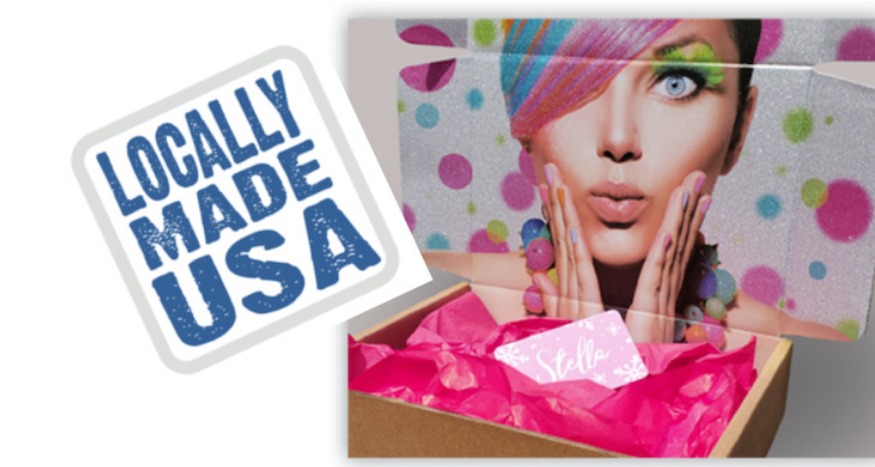
2020-09-28 13:42:34
Looking to the Future of Domestic Cosmetic & Packaging Manufacturing
2020-09-28 13:42:34

What does the future look like for USA/Canada manufacturing in the cosmetic industry?
Beauty Packaging recently touched base with research experts and leading domestic packaging suppliers for their thoughts based on customer interaction and brand requests.
According to the IBISWorld report on Cosmetic & Beauty Products Manufacturing in the U.S.:
“Speed and versatility are growing in importance as small beauty companies with specific target consumers seek out industry operators that are able to quickly manufacture innovative products to stay ahead of industry trends. For this reason, research and development of new products, including investment in marketing and product packaging, has increased automation and the verticalization of manufacturing has given some operators competitive advantages over others."
The report continues, "As more small business owners enter the cosmetics and beauty products industry, manufacturers that can accommodate business owners' requests will likely have a competitive advantage over other manufacturers. Additionally, the ability to move a product quickly from the idea stage to development is important for meeting rapidly changing consumer demand.”
The report also states that packaging manufacturers are starting to integrate digital features like NFC into everyday cosmetic packaging, and that “the demand for a cleaner aesthetic that captures the essence of the product in the most uncluttered way is on the rise.”
Consumers are also demanding that packaging be reusable and sustainable.
Additionally, IBISWorld points to the increased popularity of social media platforms—which emphasizes the importance of the color, texture and packaging of products—and says “operators are expected to continue investing in research and development to formulate new and innovative products with a special emphasis on products that photograph well.”
The Value of a ‘Made in the USA’ Label
Most promising, over the next five years, IBISWorld says consumer spending and consumer confidence are expected to grow, and as a result, domestic demand for luxury products may increase.
“The steady demand for imports and the rise in consumer spending will likely provide an opportunity for increased revenue for domestic producers. The value of exports is expected to increase an annualized 0.7% to $9.5 billion over the five years to 2025 as foreign demand for U.S. goods remains strong.”
Supplier Perspectives
“The Coronavirus has led to much uncertainty as to what consumers want and need from their beauty brands,” says JSN’s senior account manager, Sean Kavanaugh. “Currently, however, we are seeing a strong pattern of inquiries from new customers, plus existing customers proceeding with projects initially put on hold when the virus shut everything down. Will this continue as the virus prolongs? No one really knows, but based upon what we see, JSN remains positive.”
Harmony Paper’s CEO Anthony Grinnell, tells Beauty Packaging, “The future looks good for U.S. manufacturing. With the Chinese tariffs in place and seemingly not being removed any time soon, along with the migration of manufacturing back to the U.S. due to Covid, I truly believe a meaningful amount of manufacturing will come back to the U.S. How long it stays in the U.S. will depend on the drive of retailers and brands to reduce costs and whether these lower cost countries can get up to speed on environmentally friendly production.” (Harmony Papers' Diamond Print e-comm liner is shown)
Josh Edmonson, business development manager, Berry M&H, agrees that the future is bright for the U.S. packaging manufacturer space. He says, “When you think of all the innovations coming into the market regarding sustainability, specialty colorants, and high-end decoration, we can produce better brand-defining packaging that will drive sales.”
New innovations in light weighting and scrap recapture has made the industry more sustainable than at any point in its history, says Edmonson. “With efficiencies at an all-time high, lean manufacturing and automation innovation, we can effectively take away the one advantage that overseas manufacturing had: price.”
Edmonson adds, “Delivering an affordable pack quickly with unmatched quality and aesthetics is a hallmark of today’s domestic manufacturers.”
At Authentix, Franco Diaz, CPP, brand protection director, stresses the importance of keeping brands and products secure, going forward. “Brands are learning that counterfeiting and other illicit activities are a permanent and growing threat to the beauty industry. To ignore this threat is to invite risk that could destroy a brand.”
Looking ahead, Randi Barron, president of Madeline Blondman & Co, says she is hopeful for increased manufacturing in the U.S. but thinks the beauty industry itself is at a crossroads, as sales of retail beauty products will change, with a shift to online shopping as well as the limits of in-person shopping. “The ability to test and try is challenged right now,” says Barron. “It’s sort of ‘look-don’t touch.’ The distinct advantage of in-person shopping was the touch, try, and feel. The inability to do that will also drive people to the online shopping option.”
Regardless of the challenges faced, Marc Silverberg, president, M C Packaging Corp, remains optimistic, saying, “The beauty industry has always been resilient and innovative, and will continue to grow and thrive.”
LinkedIn




